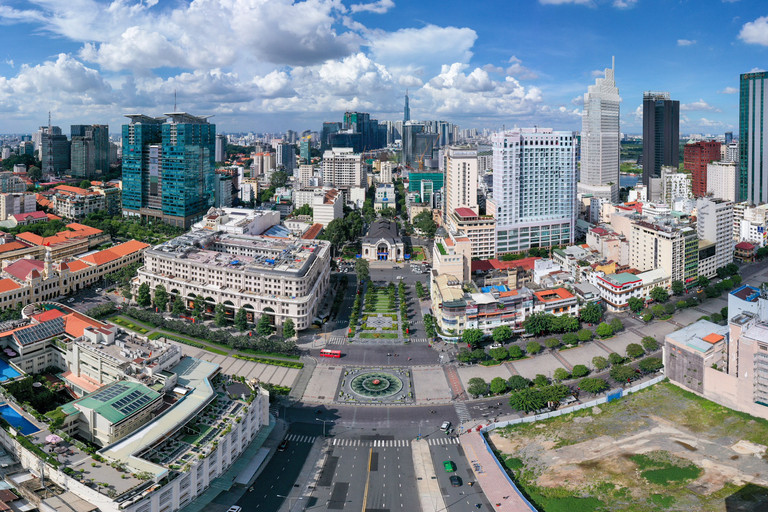
VietNamNet talked with Truong Minh Huy Vu, deputy head of the HCM City Institute for Development Studies (HIDS), about how to help HCM City overcome challenges and return to the growth orbit.
HCM City’s economy hit bottom in the first quarter 2023 with a modest growth rate of 0.7 percent, but it bounced back later and obtained a growth rate of 5.81 percent. What do the figures mean?
HCM City’s GRDP (gross regional domestic product) growth rate in 2023 was lower than expected (5.81 vs 7.5-8 percent), but HCM City remained the city with the highest budget collection, estimated at VND446.545 trillion, or 95.07 percent of initial estimates. This is an encouraging result which showed the great efforts of the city.
2023 was a difficult year for everyone because of global conflicts which caused disruption in the material, distribution and consumption areas. The impact resulted in the low growth rate of 0.7 percent in the first quarter. But with the tireless efforts of the city and reasonable solutions applied, the economic conditions turned better and ended with the growth rate of 5.81 percent.
“Outdoing ourselves’ has always been the mindset of HCM City’s people during the last 50 years of development. What do you think the city needs to focus on in 2024 to return to the right development orbit?
The most important solution for now is stimulating demand.
In order to stimulate aggregate demand, it is necessary to affect four elements, including domestic consumption; investment (both private and public); government procurement and net exports.
Of the four solutions, domestic consumption will both allow the city’s economy escape current stagnation, and create a driving force to maintain sustainable development in the long term.
HCM City has higher consumption level than other localities because of high population and the highest average income level.
In theory, some tools can be used to stimulate domestic consumption, such as tax cuts and subsidies. But the tools are beyond the city’s jurisdiction. So, what do we have to do in such situation?
It is true. Therefore, the city’s agencies need to design policies which can bring similar effects to increase people’s usable purchasing power. Shopping on credit is an effective tool being applied in many countries. It allows consumers to have more usable income for short term, thus helping increase shopping demand.
Also, it is necessary to create online shopping channels that help connect buyers and sellers on a large scale.
To do this effectively, e-commerce is the key, especially the organization of online shopping programs. The model has boomed with the municipal authorities in 2023 coming forward and urging the organizing of many activities and events to promote shopping.
What should the city do right now, in the first quarter?
The municipal authorities are planning trade fairs and events to stimulate consumption in Tet season, and tourism and entertainment services.
Both offline and online modes will be applied for the activities. Stimulating activities and livestreams are not only supporting tools, but the key solutions to promote trade exchange, service and tourism.
The activities need to be associated with concentrated sale promotion programs, from issuing vouchers and offering discounts for workers and students, to promoting consumer credit channels.
First of all, it is necessary to ‘embed’ digital contents and e-commerce on social network platforms into credit and lending program, connecting banks and businesses.
The activities that link trade and tourism between HCM City and other localities throughout the country have been organized regularly over the last two years, especially in the eastern part of the south and Mekong Delta, which is the center of goods exchange.
What are the long-term solutions to help stimulate domestic demand?
The outcomes in the future are the result of works at this moment. It is necessary to restore consumers’ confidence in goods quality and origin, improve anti-tax evasion and anti-smuggling works.
The municipal authorities need to continue to implement a project on turning the city into the largest e-commerce center on social medial platforms in Vietnam; implement plans on restructuring large traditional markets; and surveying the adaptation of traditional trade amid the e-commerce wave.
HCM City is entering the second phase of the project on regional connection in trade promotion. It is necessary to promote investment to perfect logistics and forwarding systems utilizing digital technology. This is exactly the foundation to form 5tthe ‘HCM City area consumer market’.
Ho Van